
February 13, 2015
During its radio heyday, Amos 'n' Andy was definitely a legend in its own time. While entertainment programs have an admirable capacity to instill loyalty in their audiences, though, very few have the magic to capture the public's imagination forever. Proving itself to be a program dedicated to the best in entertainment for its audience, Amos 'n' Andy reinvented itself as necessary, becoming something different than it had been, yet remaining a favorite of listeners everywhere.
The Amos 'n' Andy Show after 1943 were radically different from the earlier program, but the revitalized show stood out in its own way. Now cast more in the mold of a traditional situation comedy, the later Amos 'n' Andy shows spotlighted a variety of black characters in many different walks of life. There were characters successful in business, entertainment, politics and more featured in the program and this was an area not explored much by other programs of the time.
The Kingfish was one of the program’s best-known and popular supporting characters, making his appearance in the early days of the show. But the half-hour format proved to be his meat; audiences loved his weekly attempts to swindle Andy out of some fortune or treasure which the thick-witted Andrew H. Brown had managed to acquire, and it wasn’t too long before the focus of the comedy zeroed in on a weekly formula highlighting the Kingfish’s machinations.
These shows retained the heart that Amos 'n' Andy has always been known for among fans. The characters themselves remain at the center of the later shows as well. Even though Amos moved into the background somewhat, listeners still chuckled and laughed at the adventures of the well-realized cast, particularly Andy as he got in and out of whatever predicament The Kingfish got him into.
Restored to the best audio quality, Amos 'n' Andy, Volume 6 clearly shows the enduring humor and impact this series had on America, then and now.
6 hours - $8.99 Download / $17.98 Audio CDs
Special 50% discount Offer
featuring a set from the Variety category
From the earliest days of broadcasting, radio audiences always loved a “really big show”. Having been weaned on the touring vaudeville performers and Broadway revues of the more prosperous 1920s, listeners of the 1930s enjoyed the chance to hear well-known performers taking their turns on the many variety shows that hit the airwaves in the 1930s. It helped, of course, that many of the same performers who had made their names on the stage a few years earlier turned to radio as a source of income during the tight dollar years of the Great Depression - and one of the earliest to come before the microphone was “The King of Jazz”, bandleader and showman Paul Whiteman.
In December of 1943, the Blue network debuted a musical variety series that would quickly become one of the most distinguished - and expensive - radio shows on the air. Titled the “Radio Hall of Fame”, this hour-long Sunday evening offering presented itself as a weekly tribute to the best entertainment then available on stage, in radio, on recordings, and in motion pictures. To determine which performers and productions were worthy of recognition, the producers formed an alliance with Variety, the weekly “bible” of show business, which closely followed events on all of the entertainment fronts. In its role as a critical but affectionate observer, Variety’s editors would decide who and what deserved to be singled out in a given week - basically, which singers, actors, performers, stage productions, and films were garnering the most critical praise - and recommend the line-up to “Hall of Fame’s” production staff.
Heard today, the “Radio Hall of Fame” remains outstanding entertainment, reflecting the tastes of the general public during the latter years of World War II. There’s never any shortage of talent on hand - everyone from Bob Hope and Jimmy Durante to Dick Powell and Kenny Baker - and Whiteman, conducting a 31-piece orchestra, is clearly in his element. Today, in a time when the once-common variety show has completely disappeared from the airwaves, it’s fun to return to an era when listeners could literally expect to hear anyone or anything presented in a sixty-minute line-up. The six broadcasts in this collection, taken from the program’s second season, were transferred directly from Paul Whiteman’s personal recording library and have been fully restored for impressive audio fidelity.
Specially priced until February 26th. 6 hours - $4.49 Download / $8.99 Audio CDs
Special 50% discount Offer
featuring a set from the Comedy category
“Heavenly days!”
From October 5, 1953 to March 23, 1956 - a total of 577 fifteen-minute broadcasts - Fibber and Molly McGee continued to generate mirth from their famous address at 79 Wistful Vista. The half-hour version of Fibber McGee and Molly only occasionally featured “serialized” plot lines - stories that would play out over two or more broadcasts - but with the quarter-hour format, Leslie took a page from the Lum ’n’ Abner scrapbook and began to fashion lengthy story arcs to accommodate the new five-times-a-week broadcasts. The longest running of these was the saga of “Citizen X” (displayed in the first three programs of this collection), a contest cooked up by Wistful Vista’s merchant community to boost the local economy. Over the course of fourteen episodes, Fibber McGee valiantly tried to unveil the identity of “X”...finally discovering, to his embarrassment and chagrin, that the culprit was none other than his better half, Molly.
In this, the first of a new series of collections transferred from the long-lost original NBC Reference Recordings, Radio Archives invites you to listen to some irrefutable evidence: forty full-length programs that, for the most part, have not been heard since they originally aired over sixty years ago. An additional bonus is their sparkling audio quality; thanks to the innovations of the digital age, these classic shows can now be heard at a level of clear and crisp high fidelity that far exceeds what was available to the average listener in 1954. The result is shows that sound - and are - just as bright, fresh, and entertaining as they were when first heard -- a real tribute to the time, talent, and devotion to quality that went into their production.
Specially priced until February 26th. 10 hours - $7.49 Download / $14.99 Audio CDs
16" Transcription Discs
Broadway Records Auction company is selling thousands of our transcription discs. These discs will be sold on a first come basis for the minimum bid. Browse through hundreds of UNSOLD transcription discs from the recent Broadway Records disc auction. Sold by Broadway Records.
The next auction starts on February 15th. Click here Service@RadioArchives.com to receive the auction list by email.
Will Murray's Pulp Classics #72
Read by Alan Taylor. Liner Notes by Will Murray
Out of Asia had come a new threat to civilization––Fire-Eyes! A mysterious tyrant, absolute commander of the air, land and sea forces a trembling world called the Black Invaders, he called himself the Emperor of the World. And Fire-Eyes had earned that terrible title.
The first to fall had been the Asian continent itself. Europe crumbled next before the onslaught of the merciless Black Invaders. Now they had seized control of Canada, and were poised to strike south––south into the heart of the United States of America!
Against Fire-Eyes and his chief pilot, the Black Hawk, stood the men of the United States Air Force. And none was more capable than Captain Dusty Ayres and his resourceful wingmen, Curly Brooks and Biff Bolton. Flying planes more advanced than anything in the sky, the men of High Speed Group #7 were the flashing tip of the spear against the encroaching Black legions.
This was the premise of Dusty Ayres and his Battle Birds, Popular Publications’ short-lived foray into futuristic air-war. The prolific Robert Sydney Bowen told the story of the Second World War as he envisioned it in the years 1934 and ’35. A practitioner of the “Yammering Guns” school of pulp aviation fiction, Bowen created the series in response to Robert J. Hogan’s immensely successful G-8 and His Battle Aces, but set his stories a decade into the future instead in retelling the sky skirmishes of World War I.
The result was a twelve-part saga in which every issue told another stand-alone installment of Dusty Ayres’ ferocious fight against the Black Invaders of Fire-Eyes. And for the back of the magazine, Bowen penned additional short stories depicting other theaters of conflict in this desperate last-ditch effort to preserve America and human civilization from the remorseless enemy.
In the second stirring installment, Crimson Doom, Dusty is once more pitted against the seemingly unkillable enemy pilot known as the Black Hawk, as the son of the President of the United States is taken hostage in a cruel effort to break the will of the U.S.A. But the forces of Fire-Eyes reckoned without the skill and daring of Dusty Ayres, who takes to the sky to rescue this all-important pawn, and hurl back the encroaching armies of the Black Invaders.
Crimson Doom is read by Alan Taylor, along with three extra stories of Battle Birds versus Black Invaders, “The Floating Phantom”, “The Silver Caterpillar” and “The Death Bomber.”
6 hours - $11.99 Download / $23.98 Audio CDs
Will Murray's Pulp Classics #73
Read by Roy Worley. Liner Notes by Will Murray

“Be there a man with soul so dead that it didn’t tingle a trifle when his ears heard mention of the Foreign Legion of France! La Legion Etrangere! The Hell Battalion! The Army of the Damned! The Stepsons of Madam Republic! The sun-bitten, war-smitten corps that has carried the Tricolor from Casablanca to Hanoi, Dahomey to Somaliland, the English Channel to Madagascar. The outfit known to French regulars as ‘cavalry on foot’ because it can march so fast and far. The Legion!”
—Theodore Roscoe
Stories of the French Foreign Legion were a staple of the great pulp magazines of the 20th Century. The ingredients of high adventure were embedded in the unique situation of fighting men from all around the world, fleeing from the law, broken hearts or other nameless tragedies, banded together in exotic foreign lands in service to French national interests. In an earlier era, these infamous soldiers of misfortune were a symbol of romantic glory.
P. C. Wren’s oft-filmed Beau Geste was the most celebrated French Foreign Legion novel ever penned, but when it came to short stories and novelettes, Theodore Roscoe was the prince of the genre. His battle-seasoned Legionnaire, Old Thibaut Corday, has also stood the test of time, thanks to the author’s immensely imaginative storytelling skills––and the fact that he wrote about people and places he knew because he visited them.
The series ran in the pages of Argosy between 1929-39. Corday is a retired fighting man dwelling in Algiers, who spins tales of his soldiering days for any who will listen. Dubbed the “Bearded Scheherazade of the Legion,” Corday recounts, not dusty yarns of outpost forts in distant deserts, but strange stories that defy rational explanation. Defy––not for deny. For no matter how wild the tale, no matter how much the canny old Legionnaire seems to be stretching the truth, there is always a satisfying solution.
For what we hope to be the first of many audiobooks centering about this colorful character, we present Thibaut Corday’s debut story, “Better Than Bullets,” as well as “The Dance of the Seven Veils,” “An Eye for an Eye,” and the absorbing novelette, “The Death March.” They comprise a stirring introduction to this immortal character and his fellow soldiers of misfortune, Yankee Bill the Elephant and Christianity Jensen the Dane. If you think the exploits of the French Foreign Legion is old stuff, Theodore Roscoe will show you how great tales are told––if you will only lend an ear to Old Thibaut Corday as he weaves yet another eye-popping yarn of his youth....
Thibaut Corday is the perfect protagonist for audiobooks! Read with appropriate aplomb by Roy Worley.
5 hours - $9.99 Download / $19.98 Audio CDs
Robert Weinberg Presents
by F. Paul Wilson and Tracy L.Carbone
Read by Nick Santa Maria. Liner Notes by Robert Weinberg
"Paul Wilson and Tracy Carbone have penned a winner. The suspense is razor sharp and the characters masterfully drawn. Paul Wilson is at the top of the game, and Tracy Carbone is a welcome addition to the genre. You'll love The Proteus Cure." – Michael Palmer, NY Times best selling author of Political Suicide
In medical ethics, the line between right and wrong is often blurred. Who is to decide what is for the good of humanity?
Changing the world. One person at a time…
That is the mission statement of Tethys Hospital, run by Dr. Bill Gilchrist and his deformed sister, Abra. VG723, their revolutionary stem-cell-based therapy, appears to be capable of doing just that for the cancer patients who come to Tethys. VG723 is often their last hope. But if they match the protocol, they're virtually guaranteed a cure.
Dr. Sheila Takamura, a young, dedicated oncologist, is proud to be involved in the clinical trials. Once the FDA approves it for widespread use, VG723 will revolutionize cancer therapy. That is why she's alarmed when former patients return with bizarre syndromes. Yes, they're cancer free, but they're experiencing dramatic changes in their hair and skin and general appearance. When she investigates a possible link to the protocol, those patients start dying. As the body count grows, Sheila finds her own life in danger. She comes to suspect there might be a literal meaning behind the Tethys motto – but can she learn the truth in time to save herself and millions of others?
In medical ethics, the line between right and wrong is often blurred. Who is to decide what is for the good of humanity?
Changing the world. One person at a time…
That is the mission statement of Tethys Hospital, run by Dr. Bill Gilchrist and his deformed sister, Abra. VG723, their revolutionary stem-cell-based therapy, appears to be capable of doing just that for the cancer patients who come to Tethys. VG723 is often their last hope. But if they match the protocol, they're virtually guaranteed a cure.
Dr. Sheila Takamura, a young, dedicated oncologist, is proud to be involved in the clinical trials. Once the FDA approves it for widespread use, VG723 will revolutionize cancer therapy. That is why she's alarmed when former patients return with bizarre syndromes. Yes, they're cancer free, but they're experiencing dramatic changes in their hair and skin and general appearance. When she investigates a possible link to the protocol, those patients start dying. As the body count grows, Sheila finds her own life in danger. She comes to suspect there might be a literal meaning behind the Tethys motto – but can she learn the truth in time to save herself and millions of others?
Read by Nick Santa Maria with hard-driving intensity.
"Wilson is one of the masters of the medical thriller." – Larry King
11 hours - $21.99 Download / $43.98 Audio CDs
New Will Murray's Pulp Classics eBooks
The best of timeless Pulp now available as cutting edge eBooks! Will Murray's Pulp Classics brings the greatest heroes, awesome action, and two fisted thrills to your eReader! Presenting Pulp Icons such as the Spider, G-8 and His Battle Aces, Operator #5 as well as wonderfully obscure characters like the Octopus and Captain Satan. Will Murray's Pulp Classics brings you the best of yesterday's Pulp today!
Beginning in 1932, Battle Birds brought readers a thrilling main story, referred to as a “novel”, that featured a rotating cast of main characters like The Three Mosquitoes and Smoke Wade. After nineteen issues, just over a year and a half after its debut, the magazine began to feature the air adventures of Dusty Ayres, and the magazine became officially titled Dusty Ayres and his Battle Birds. This lasted until the summer of 1935 when the magazine folded after thirty-one issues. But Battle Birds wasn't finished; it would return. In early 1940, Battle Birds reappeared on the newsstands. But now the focus of the stories was on the conflict that would soon be known as World War II. This resurrected Battle Birds lasted for 26 issues until May 1944. And now Battle Birds is back, reissued for today’s readers in electronic format. $2.99.
Dare-Devil Aces #18 August 1933 The Midnight Ace
Dare-Devil Aces was another of the many pulps that rode the wave of popularity of World War I aviation tales in the decade after the conflict. It made its debut in February 1932 and lasted for an astounding 135 issues. It finally closed after World War II ended, with the November 1946 issue. During its run, it presented a wide assortment of high-flying aerial series, including The Red Falcon, The Vanished Legion, The Three Mosquitoes, Molloy and McNamara, The Black Sheep of Belogue, The Mongol Ace, Chinese Brady, Captain Babyface, Smoke Wade and others. Strap on your flying helmet, toss that scarf about your neck and get ready for some soaring action in the skies over France and Germany during the Great War. Dare-Devil Aces return in vintage pulp tales, reissued for today’s readers in electronic format. $2.99.
Dare-Devil Aces was another of the many pulps that rode the wave of popularity of World War I aviation tales in the decade after the conflict. It made its debut in February 1932 and lasted for an astounding 135 issues. It finally closed after World War II ended, with the November 1946 issue. During its run, it presented a wide assortment of high-flying aerial series, including The Red Falcon, The Vanished Legion, The Three Mosquitoes, Molloy and McNamara, The Black Sheep of Belogue, The Mongol Ace, Chinese Brady, Captain Babyface, Smoke Wade and others. Strap on your flying helmet, toss that scarf about your neck and get ready for some soaring action in the skies over France and Germany during the Great War. Dare-Devil Aces return in vintage pulp tales, reissued for today’s readers in electronic format. $2.99.
Fighting Aces was the youngest in the line of Popular Publications aviation pulps. It was strictly a product of World War II. The inaugural issue was published with a March 1940 date on the cover, as the world war was raging through Europe. After D-Day and the war began winding down, the pulp was closed down as well. After twenty-seven issues, the July 1944 magazine was the last one published. But during those glorious twenty-seven issues, American doughboys fought alongside the French, English, Australian and Canadian Allies in battle after aerial battle... pitting their skill against the Nazi scum. Fighter planes burst into flame and spiral to earth in these WWII tales of soaring action. Fighting Aces return in vintage pulp tales, reissued for today’s readers in electronic format. $2.99.
Sports Novels Backcourt Badman by Ray P. Shotwell
Sports thrills, ripped from the burning pages of one of the all-time great sports magazines of the 1930s, Sports Novels! Magazines containing sports fiction were one of the staples of the pulp magazines, becoming popular in the early 1920s and by the mid-1930s there were over two dozen titles on the newsstands. In early 1937, Popular Publications decided to enter the lucrative field of the sports fiction magazines. The April-May 1937 issue of Sports Novels hit the newsstands in late March, featuring an eye-catching baseball cover. For the next fifteen years, each issue featured stories of football, boxing, baseball, hockey, track, basketball, tennis and hockey. Nearly every sport imaginable was represented in the long-running magazine. It continued publishing for a total of eighty-five issues until the April 1952 issue, when pulp magazines were in their waning days. Vintage Sports Novels are now being reissued for today’s readers in electronic format. $0.99.
Sports thrills, ripped from the burning pages of one of the all-time great sports magazines of the 1930s, Sports Novels! Magazines containing sports fiction were one of the staples of the pulp magazines, becoming popular in the early 1920s and by the mid-1930s there were over two dozen titles on the newsstands. In early 1937, Popular Publications decided to enter the lucrative field of the sports fiction magazines. The April-May 1937 issue of Sports Novels hit the newsstands in late March, featuring an eye-catching baseball cover. For the next fifteen years, each issue featured stories of football, boxing, baseball, hockey, track, basketball, tennis and hockey. Nearly every sport imaginable was represented in the long-running magazine. It continued publishing for a total of eighty-five issues until the April 1952 issue, when pulp magazines were in their waning days. Vintage Sports Novels are now being reissued for today’s readers in electronic format. $0.99.
Seven Horror Stories 99 cent eBook Singles
Each 99 cent eBook Single contains a single short story, one of the many tales selected from the pages of Horror Stories. These short stories are not included in any of our other eBooks. Horror Stories! The dark companion to Dime Mystery Magazine. Created to showcase stories too horrible for Terror Tales. The third of the triumvirate of fear pulps. This brand of fiction came to be called Weird Menace. The mystery-and-menace formula proved so successful that publisher Popular Publications produced Dime Mystery Magazine, Terror Tales and Horror Stories. These three dominated the Weird Menace genre all through the 1930s. Blurbed as “mystery-horror” stories instead of “mystery-terror,” Horror Stories was formulated differently that its companion titles. Damn the plot. Pour on the menace! This ebook contains a classic story from the pages of Horror Stories magazine, reissued for today’s readers in electronic format. $0.99.
All eBooks produced by Radio Archives are available in ePub, Mobi, and PDF formats for the ultimate in compatibility. When you upgrade to a new eReader, you can transfer your eBooks to your new device without the need to purchase anything new.
Four Shadow reprints on sale!
For the next two weeks these four The Shadow reprints are being discounted by 10%.





by Will Murray and Lester Dent, writing as Kenneth Robeson, cover illustration by Joe DeVito
When William Harper Littlejohn unearths a shadowy figure transfixed in ice, the renowned archeologist understands that he has made the most momentous discovery of his brilliant career. For inscribed over the frozen form is this chilling warning:
“IF I STILL LIVED, MANKIND WOULD TREMBLE!”
Who is this monster? Why does his name strike terror into the hearts of brave men? Can even Doc Savage control him once he breaks free of his icy tomb?
From the Gobi Desert to war-torn Free China, the Man of Bronze and his fighting crew battle a threat so terrifying that it could change the course of human history…. Softcover $24.95
Who knows what evil lurks in the hearts of men? The Shadow knows! Lamont Cranston takes center stage in two thrilling mysteries by Walter B. Gibson writing as “Maxwell Grant.” First, the peace and quiet of a countryside give way to criminal warfare as The Shadow stalks the hidden mastermind of the “Murder House.” Then, in “Death in the Crystal,” Margo Lane’s visit to the Tibetan fakir Mahatma Xanadu sets The Shadow on the trail of strange crime that leads to a criminal mastermind discovering The Shadow’s secret identity as Lamont Cranston. BONUS: a classic Shadow adventure from the Golden Age of Radio! This instant collector’s item showcases both classic color pulp covers by George Rozen and Modest Stein and the original interior illustrations by Tom Lovell and Paul Orban, with original commentary by popular culture historians Will Murray and Anthony Tollin. Double Novel Reprint $14.95
The pulp era's legendary superman returns in thrilling maritime mysteries by Harold A. Davis and Lester Dent writing as "Kenneth Robeson." First, with a million-dollar bounty on his head, Doc Savage hunts for the "Devils of the Deep" after international ships are seized by a mysterious "sea monster." Then, modern-day piracy is suspected when the Navy's newest submarines disappear in "Five Fathoms Dead" ... but where is the Man of Bronze? This deluxe pulp reprint leads off with the classic color pulp cover by Emery Clarke, and also features the original interior illustrations by Paul Orban and historical commentary by Will Murray, author of fifteen Doc Savage novels. Double Novel Reprint $14.95




The last few Spider and Terror Tales Replicas are reduced in price and
are in the Bargain Basement along with Pulp Reprints, and cassettes.
Comments From Our Customers!
David Walker writes:
It had been several years since I first read a Green Lama story. When I listened to the audiobook, the story sprang to life and gave it a whole new feel. I loved every minute of it!
Marilyn Assenheim writes:
WOW! Something completely different . The Sonja Blue story "Sunglasses after Dark" was wonderful although there were a few rough edges. This is a very violent story: the action is fast, hard-hitting and merciless. This is not another “slasher”; piece. The horror proceeds inexorably. I attribute much of the credit to Melodee Spevack. I listen to a lot of audio books. Ms. Spevack was wonderful. The depth and richness of her voice, the humor she infuses pull the listener along...sometimes against one’s will. The book isn’t read by the narrator; it’s performed, with skill and imagination. She disappears and the listener is left alone, in the story...in the dark...It is difficult to praise a book without giving anything away. This book is a must-hear if you crave a good horror story! You will find yourself reaching, however reluctantly, for the next in the series.
If you'd like to share a comment with us or if you have a question or a suggestion send an email to Service@RadioArchives.com. We'd love to hear from you!
3 ways to order.
1. Website RadioArchives.com
2. Phone 800-886-0551
3. Email Reply to this email with what you want to order. Payment information will be sent to you.
Whichever method you prefer, order by 7:30pm EDT and your order is mailed today!


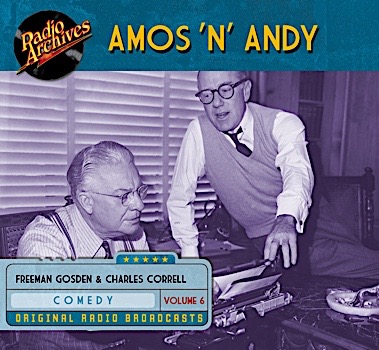

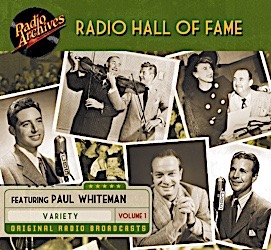




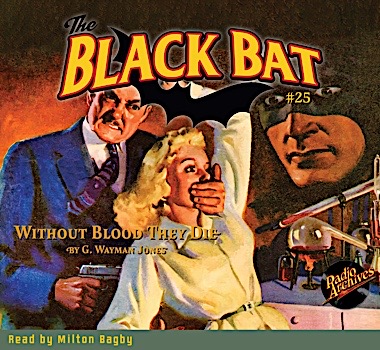
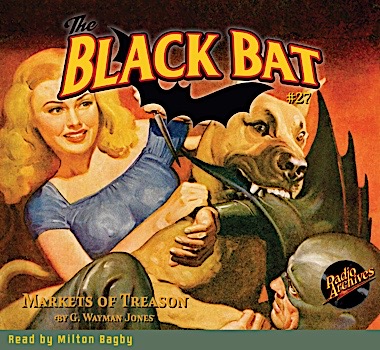


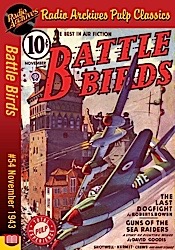


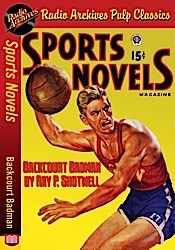
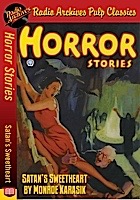
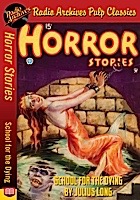

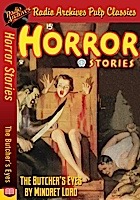


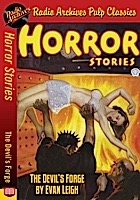

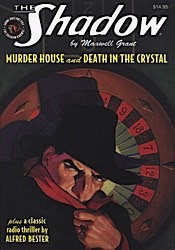
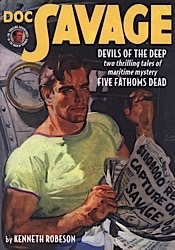















No comments:
Post a Comment